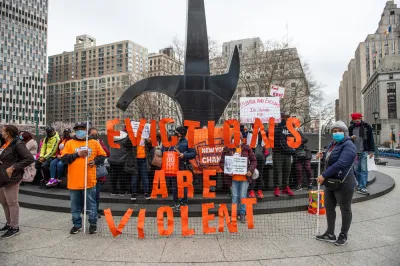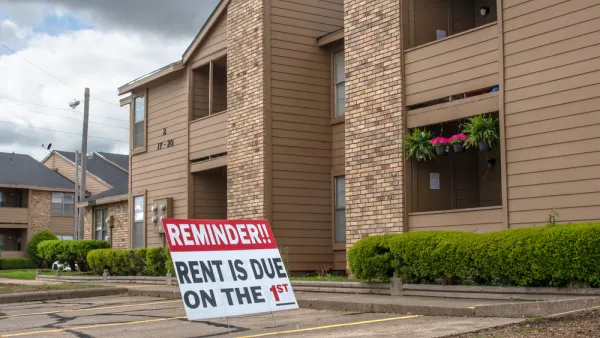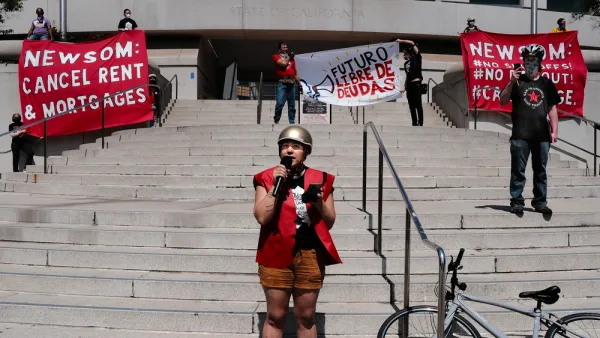Rental assistance spending in June surpassed the entire year's total so far, but there's still a long way to go.

"Emergency rental relief reached far more tenants and landlords in June than in previous months, reflecting delayed progress as the Biden administration, states and cities attempt to stave off an eviction crisis later this summer," reports Rachel Siegel.
As much money was paid to households in need of assistance in June as January through May combined, according to Siegel. Despite the progress, the pace of relief is slow relative to the amount of money available to support households through the economic consequences of the pandemic:
But housing experts caution there is a long way to go. Only about $3 billion was spent on rent, utilities and arrears through June — just a fraction of the $46 billion, in total, Congress appropriated for emergency rental aid. The vast majority of the money has not been spent while states and cities struggle to prop up programs that get money out the door.
Diane Yentel, president and chief executive of the National Low Income Housing Coalition, is quoted in the article noting that many states and cities have yet to provide any assistance to renters in need.
Indeed, Treasury data released Wednesday shows spotty progress. Some states saw encouraging jumps — the state of Illinois went from reporting zero assistance in the first five months of the year to $95.4 million in June, in large part because state officials took so long to build the program. California’s spending more than doubled in June to $74.4 million, up from $30.2 million in May.
Other places continued to lag behind or didn’t see major increases in spending, according to the Treasury data. Idaho paid out $1 million in rental assistance in May, and $1.1 million in June. Nevada paid out $2.6 million in May, then paid out less — $700,000 — in June.
For details about why some states have suddenly ramped up spending, click through to the source article.
For more reading on how to speed up rental assistance programs, see a recent article that listed three ideas to accomplish that goal.
FULL STORY: Rental relief programs ramped up in June, but fears mount that momentum may be coming too late

Analysis: Cybertruck Fatality Rate Far Exceeds That of Ford Pinto
The Tesla Cybertruck was recalled seven times last year.

National Parks Layoffs Will Cause Communities to Lose Billions
Thousands of essential park workers were laid off this week, just before the busy spring break season.

Retro-silient?: America’s First “Eco-burb,” The Woodlands Turns 50
A master-planned community north of Houston offers lessons on green infrastructure and resilient design, but falls short of its founder’s lofty affordability and walkability goals.

Test News Post 1
This is a summary

Analysis: Cybertruck Fatality Rate Far Exceeds That of Ford Pinto
The Tesla Cybertruck was recalled seven times last year.

Test News Headline 46
Test for the image on the front page.
Urban Design for Planners 1: Software Tools
This six-course series explores essential urban design concepts using open source software and equips planners with the tools they need to participate fully in the urban design process.
Planning for Universal Design
Learn the tools for implementing Universal Design in planning regulations.
EMC Planning Group, Inc.
Planetizen
Planetizen
Mpact (formerly Rail~Volution)
Great Falls Development Authority, Inc.
HUDs Office of Policy Development and Research
NYU Wagner Graduate School of Public Service



























